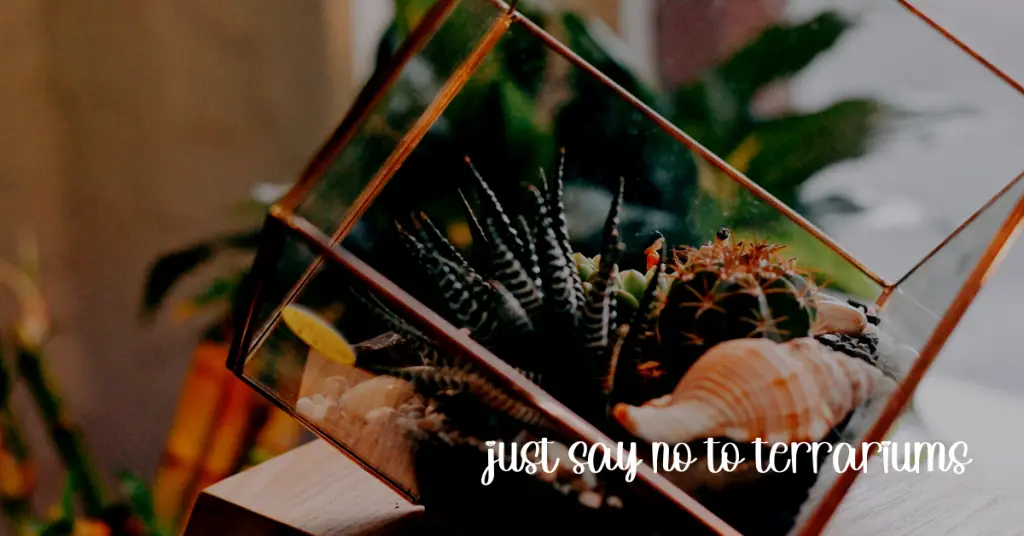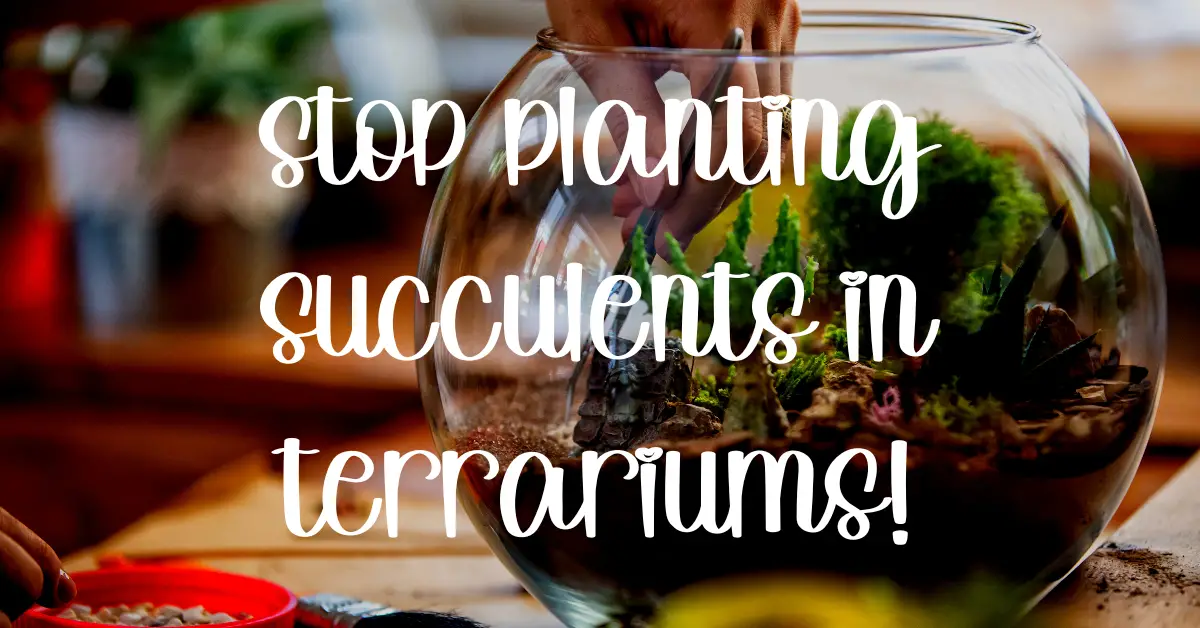Can you plant succulents in terrariums? You CAN, but should you? Terrariums are a popular way to display and care for small plants, as they provide a contained, self-sustaining environment for the plants to grow in. However, not all plants are suitable for terrariums, and succulent plants are one type of plant that you should avoid planting in a terrarium. In this post, we’ll explore the reasons why succulents are not well-suited for terrariums, and the risks and consequences of planting them in these enclosed environments.
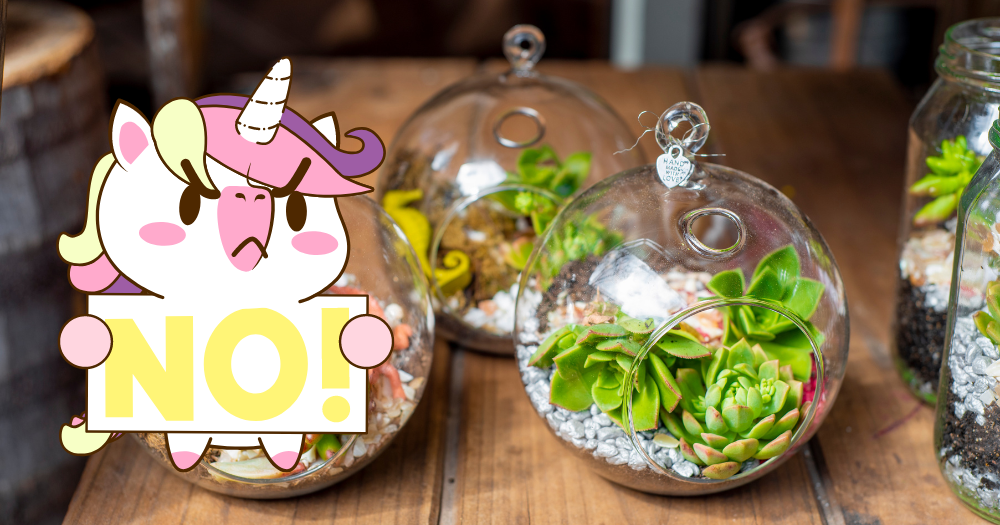
Why is the succulent in my terrarium rotting?
The succulent in your terrarium is rotting because it is in a terrarium. Read on for the specifics.
Best Succulents for a Terrarium
The best succulents for a terrarium are fake ones.
You might also like: 9 Stunningly Realistic LEGO Succulents in a Set to Transform Your Home Decor and Have Fun While Building It
Succulents Need Adequate Light
One of the main reasons why you shouldn’t plant succulents in terrariums is that these plants need a lot of light in order to grow and thrive. Succulents are adapted to dry, desert environments and need plenty of bright, indirect light in order to photosynthesize and produce energy. Terrariums, on the other hand, are typically enclosed environments that do not provide enough light for succulent plants to grow properly. As a result, succulents planted in terrariums are likely to become leggy, spindly, and unhealthy.
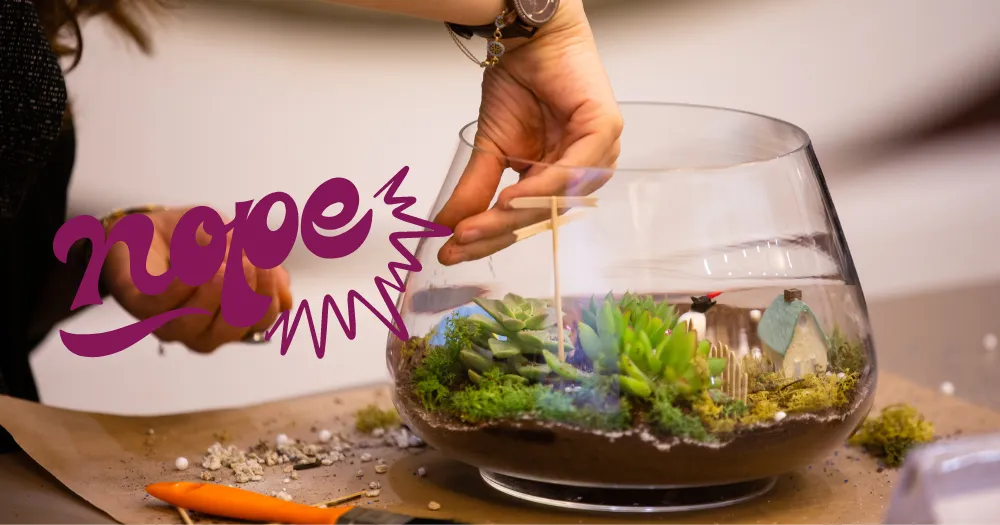
Inadequate light can cause a range of problems for succulent plants, including weak stems, pale leaves, and a lack of flowering. When succulents do not receive enough light, they may also stretch towards the light source, becoming taller and thinner than they should be. This can make them more susceptible to damage from wind or other environmental factors, which can cause the plant to break or flop over.
Another issue with planting succulents in terrariums is that the glass can magnify and intensify the light, creating hot spots that can scorch the plants. This can be especially problematic if the terrarium is placed in a sunny location or near a window. The intense heat can damage the plant’s leaves and cause them to turn brown or even die.
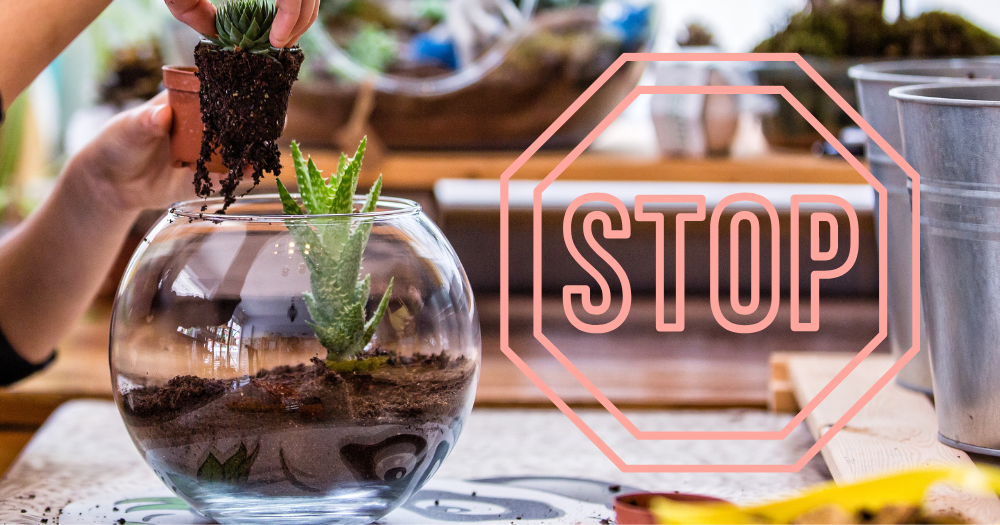
Terrariums Can Cause Succulents to Rot
Without proper airflow, the moisture that accumulates in the terrarium can promote the growth of harmful bacteria and fungi, which can attack the succulent’s roots and leaves. These pests thrive in humid environments, and a closed terrarium provides the perfect breeding ground for them. In addition, when the air is still, it can also lead to the buildup of carbon dioxide, which is harmful to plants.
Lack of airflow in a terrarium can also affect the temperature of the soil. The soil can become overheated, which can damage the succulent’s roots and affect their ability to absorb nutrients. In addition, the temperature difference between the top and bottom of the terrarium can be significant, which can cause further stress to the succulent.
It’s also worth noting that some succulent varieties are more susceptible to a lack of airflow than others. For example, certain types of Echeveria can easily succumb to rot in a closed terrarium, while others like Gasteria are more tolerant of humid conditions.
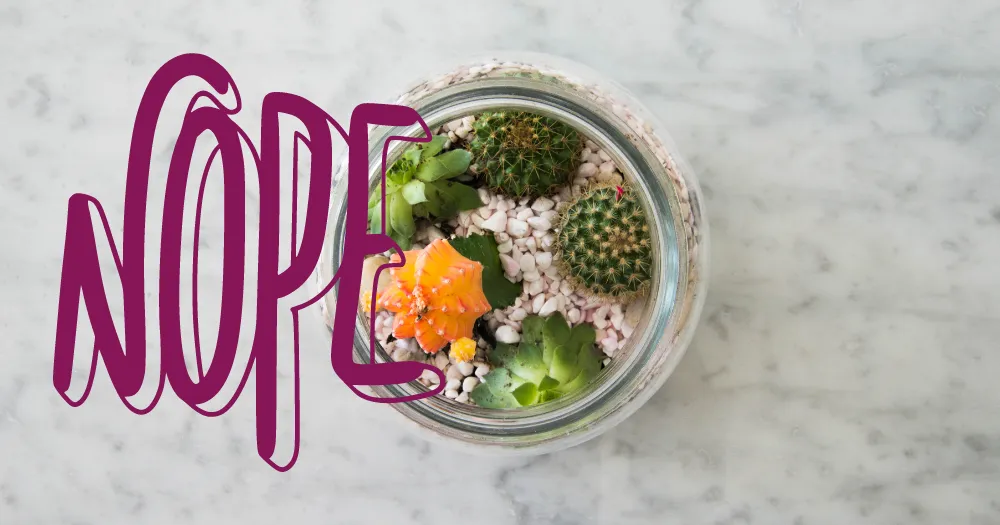
Terrariums Are Not Ideal for Succulent Growth
In addition to the problems with light and humidity, terrariums are simply not an ideal environment for succulent plants to grow in. Succulents need plenty of space to grow and spread their roots, and terrariums do not provide enough room for these plants to reach their full potential. As a result, succulents in terrariums are likely to grow slowly and may not reach their full size or shape.
You might also like: The ONE Simple Thing Succulents Need to Thrive and 5 Reasons Why Wind is It
Another issue with terrariums is that they often do not provide the right type of soil for succulents. Succulents need well-draining soil that allows water to pass through quickly, as they are adapted to survive in arid environments where water is scarce. Terrariums typically use a mixture of peat moss and sand, which can retain too much moisture and suffocate the succulent’s roots. This can cause root rot, which can be fatal to the plant.
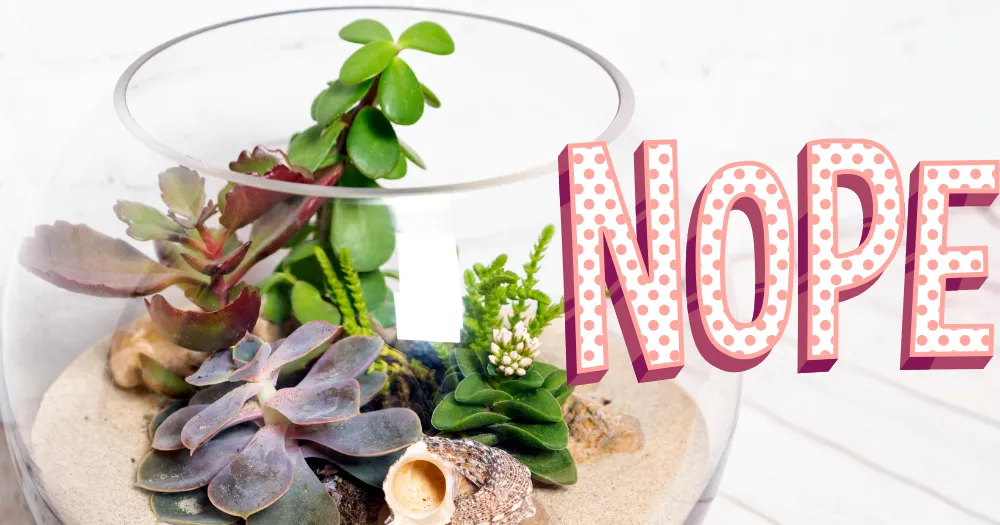
You might also like: Root Rot in Succulents: How to Identify and Treat the Problem
In addition, succulents in a terrarium may also struggle to access the nutrients they need to grow and thrive. Over time, the soil in a terrarium can become depleted of essential nutrients, and the limited space can make it difficult to add more soil or fertilizer. This can lead to stunted growth and a lack of vitality in the succulent.
Finally, terrariums are often sealed or difficult to access, making it challenging to care for the succulent inside. Watering and pruning the plant can be challenging, and it can be difficult to spot any signs of distress or disease. This can make it hard to catch and treat any problems early, which can be detrimental to the plant’s health and survival.

Where to Buy Succulents Online
It is not a good idea to plant succulents in terrariums. These plants need a lot of circulating air, bright light, are prone to rot when exposed to high humidity, and are not well-suited to the enclosed environment of a terrarium. If you want to grow succulents, provide them with a well-draining soil mix, plenty of light, and a container that gives them plenty of space to grow and spread their roots.
